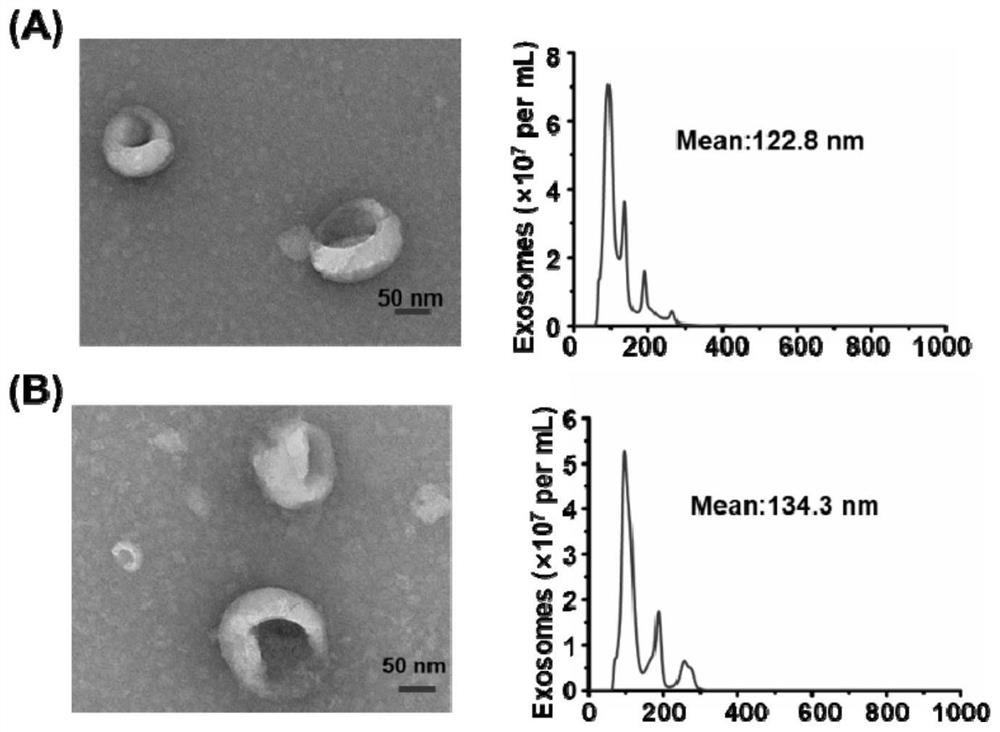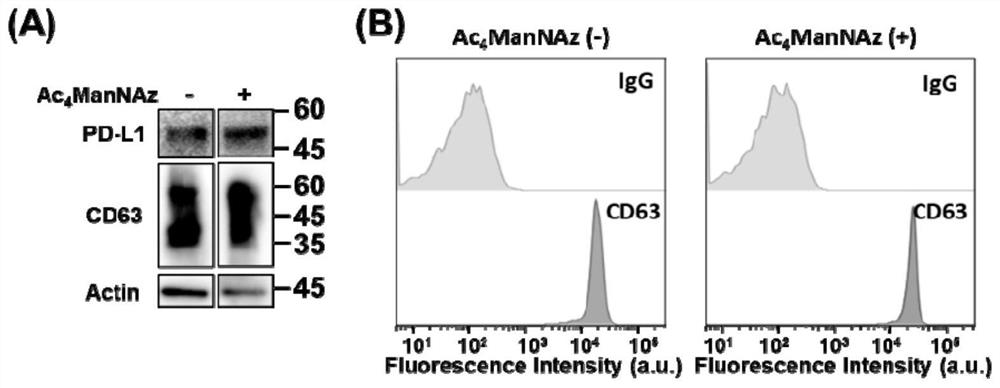Research method of exosome PD-L1
A PD-L1 and exosome technology, applied in the research field of exosome PD-L1, can solve the problem of unpredictable immunotherapy response of patients, and achieve the effect of maintaining integrity and function, small molecular weight, and simple operation.
- Summary
- Abstract
- Description
- Claims
- Application Information
AI Technical Summary
Problems solved by technology
Method used
Image
Examples
Embodiment Construction
[0039] 1. The principle of exosomal PD-L1 glycosylation detection
[0040] A375 cells (melanoma) and azide-modified sialic acid metabolism substrate Ac 4 ManNAz culture, the cells metabolize sugar to the surface of the cell membrane to form sialic acid, and then excrete exosomes through endocytosis, so that the azide-modified sialic acid is labeled on the surface of the exosomes, and then mixed with DBCO-Cy5 alkynyl dye (dissolved in DMSO) for copper-free bioorthogonal reaction labeling sugar chains. Use Cy3-labeled PD-L1 aptamer (TACAGGTTCTGGGGGGTGGGTGGGGAACCTGTT) to recognize PD-L1 protein on the surface of exosomes, and achieve specific PD-L1 glycosylation detection through fluorescence resonance energy transfer (FRET) between Cy3 and Cy5 (add The exosomes of A375 cells cultured with the same amount of DMSO were used as the control group).
[0041] (1) Cell culture. A375 cells (melanoma) were digested and resuspended in DMEM medium containing 1% FBS and 1% double antibod...
PUM
| Property | Measurement | Unit |
|---|---|---|
| wavelength | aaaaa | aaaaa |
| particle size | aaaaa | aaaaa |
Abstract
Description
Claims
Application Information
 Login to view more
Login to view more - R&D Engineer
- R&D Manager
- IP Professional
- Industry Leading Data Capabilities
- Powerful AI technology
- Patent DNA Extraction
Browse by: Latest US Patents, China's latest patents, Technical Efficacy Thesaurus, Application Domain, Technology Topic.
© 2024 PatSnap. All rights reserved.Legal|Privacy policy|Modern Slavery Act Transparency Statement|Sitemap



